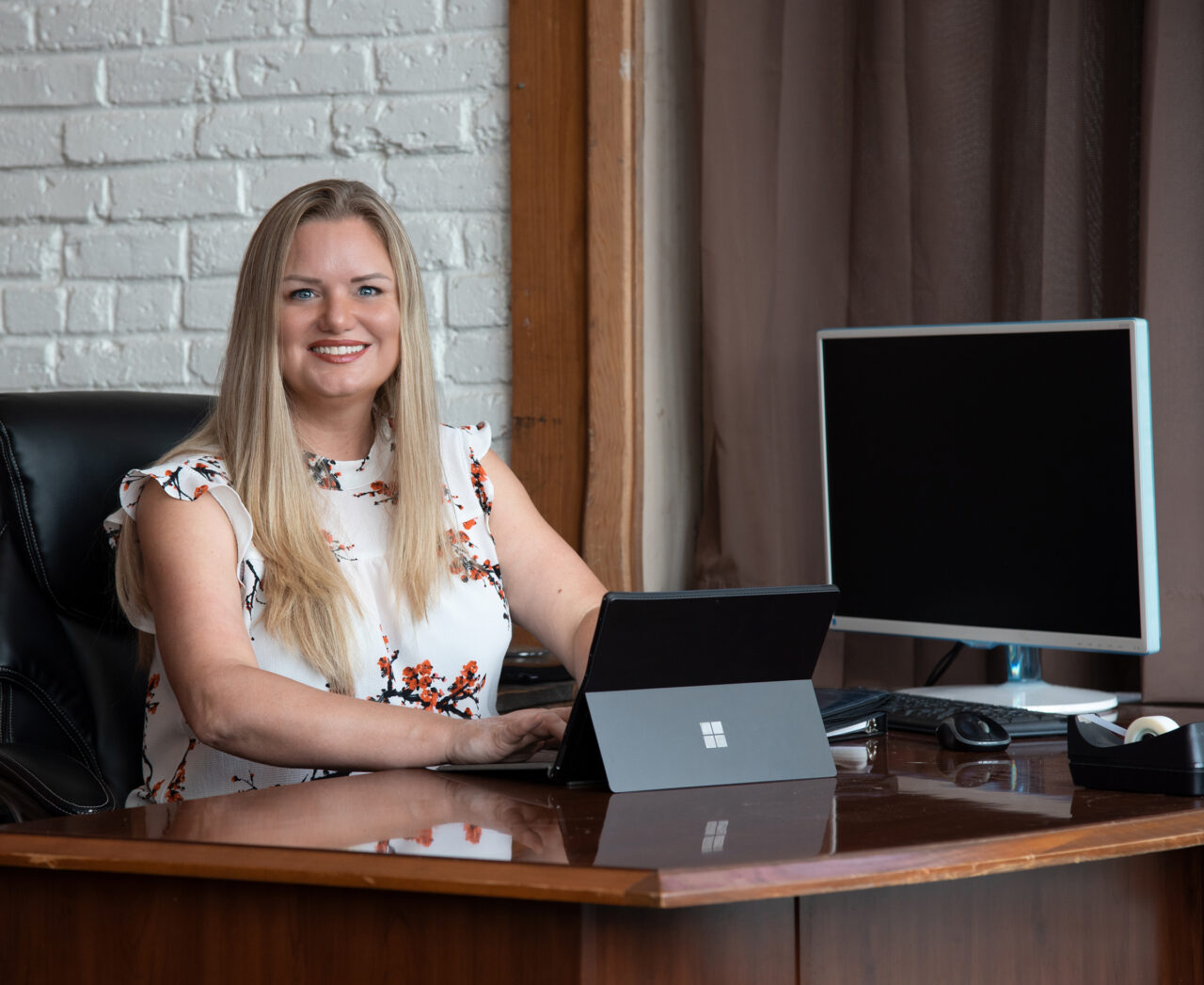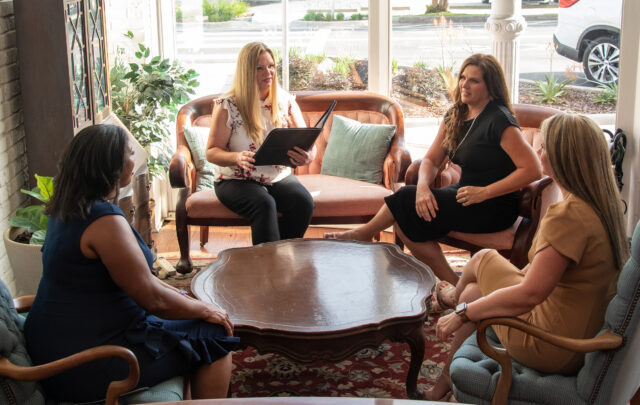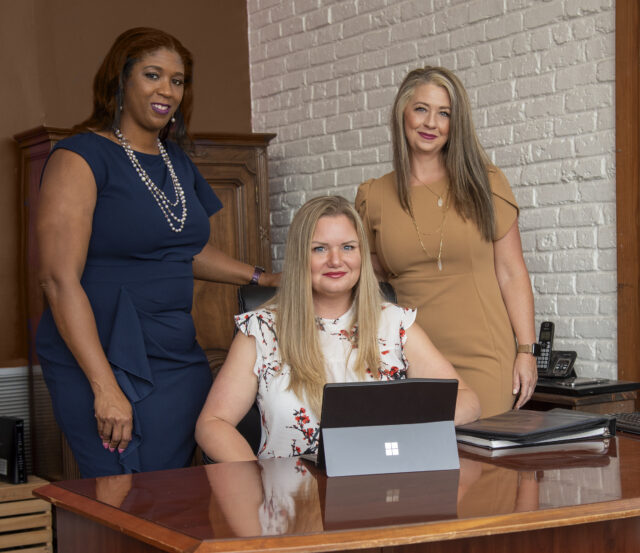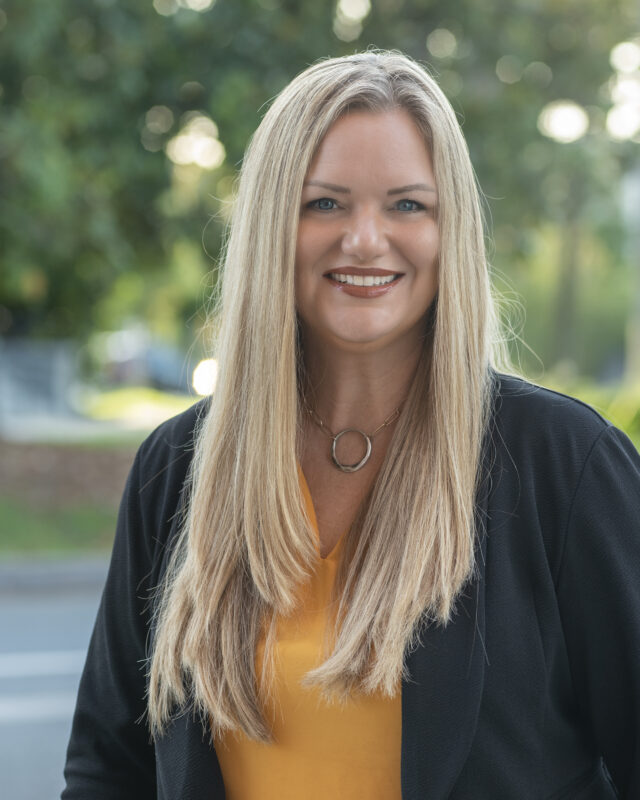
Julie Dennis will never forget the feeling of the bump in the road.
It turns out that driving over a downed power line has a particular feel to it. She remembers that feeling most clearly from the return to her parents’ Bay County house after Hurricane Michael.
The last half mile took a half-hour.
With lots of bumps.
Her parents’ house was destroyed. The entire community was changed forever.
“I’m a community planner and I’ve been working in disaster recovery for two decades,” Dennis said. “It’s different when it hits home. All a sudden my spacial orientation was off. I would overshoot turns because there were no landmarks. No trees.”
Her aunt and uncle’s house had no roof. Her parents lived with her for a year. Those memories fueled a new career vision — to become the premier grant specialist in the state of Florida, with a focus on helping local governments and nonprofits to improve the quality of life in their communities.
Dennis left Florida’s Department of Economic Opportunity shortly after Michael and she took her skills in grant writing to help people in the panhandle recover. Through her business, OVID Solutions, she has expanded her grant writing business to serve local government and nonprofits in a wider array of areas.
Her message to leaders of those organizations: There is a ton of money just waiting for you to marry with a project.
We sat down to talk with Dennis about how it works.
Who are your primary clients?
They are mostly local government and nonprofits, but we work with private organizations as well.
What exactly do you do?
We help organizations determine the types of projects they’d like to do then go look for grants to help them fund and complete those projects.
What’s a good example of one of your projects?
In Calhoun County, we helped write a long-term recovery plan for the Calhoun County government after Hurricane Michael. One of the top projects that was identified was the need to rebuild their hospital. The hospital was limping along, at best. With our partners, we were able to help them land $18.7 million in grant funding. They will be breaking ground soon on a brand-new hospital.
You mentioned nonprofit organizations. Any examples there?
We have been working with Gulf Specimen Marine Lab. They struggled to obtain grants from state and federal governments. They hadn’t had success in that arena and were skeptical of how we could help. But we’ve landed them $1 million in grants over the last two years.
They’re not skeptical anymore.
Is this mainly for big cities?
No. We worked with the City of Bristol, a tiny town in Calhoun County with a population of 996 people. They have a minuscule operating budget. Rural communities struggle on a good day. After Hurricane Michael, it was hard for them to find a silver lining. We did long term recovery plan for Liberty County — did an outreach activity to see what the community wanted to see from downtown.
We ended up getting over $9 million for Bristol. It will change that town forever.
Are there still opportunities created by the American Recovery Act?
Yes — there are a ton of opportunities out there, from various pieces of federal legislation over the past three years. In addition to the American Rescue Plan, there’s the Infrastructure Act. There’s $1.2 trillion in that bill — it’s almost overwhelming.
Most recently with the Inflation Reduction Act, there is more money coming behind that — including a big focus from a climate change perspective.
What’s the biggest challenge right now?
The thing that is more difficult now — it’s not “is there money out there?” it’s “how do we find which source will best meet the projects that a community has?”
In the Bipartisan Infrastructure Act alone, the guidebook is hundreds of pages of information, which can be overwhelming.
So, what’s the best approach?
The approach we suggest with our clients is that they don’t start with the funding that’s available, but instead with a list of projects they want to accomplish. I always tell my clients, it’s like walking into Chili’s and somebody hands you a menu that’s 20 pages long and you’re overwhelmed. So you ask your server: “What’s good?” They ask you what you’re in the mood for and you say chicken and they point you to three options and you’re happy.
We do it the same way. What do you want to accomplish? We do a light strategic planning process and help them focus on what they need to do.
Once we have their wish list and what it costs per project, we can go out and mine for resources to match.
What’s the best way for a local government to hit pay dirt?
Target underserved communities or focus on resiliency. In addition, if they are providing new jobs in a targeted sector or creating infrastructural improvements to drive economic development. That’s how a lot of smaller local governments are competitive. Say a smaller local government is trying to attract a manufacturing operation. In the past, these have typically gone to urban areas because of proximity to rail or ports.
Smaller government can get funding for a rail line spur or rail improvements, to help recruit those industries. Maybe they can increase water or wastewater capacity. There are a lot of possibilities.
What if I’m a lobbyist for local government; what should I know or be doing?
Make sure your government clients are aware of the incredible possibilities currently in play when it comes to grant funding and connect them with a grant writer who knows how to expertly navigate these quickly changing waters.
What’s the coolest thing you ever funded with a grant?
A hometown revitalization program for local governments in north Florida. The idea was to do commercial revitalization. It can be tricky to get grant funding to do that. From a community development perspective, sometimes you can do a lot with a little amount of money — we are helping Bristol and Cottondale transform their commercial corridors — areas people frequently travel through. Stuff like streetscaping, cool lighting, welcome signs, etc.
What are the current trends in grant funding?
Broadband. Coming out of the pandemic everyone became acutely aware of the importance of broadband and limitations to work and rural schooling when it wasn’t available. If you’re thinking about the way our infrastructure currently functions there are so many possibilities — adding smart technology, making it work for electric and smart vehicles. The infrastructure in some places is not set up to accommodate that. Grant funding can change everything.







